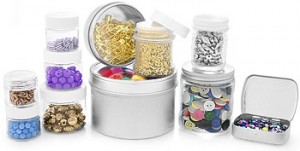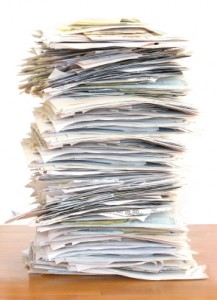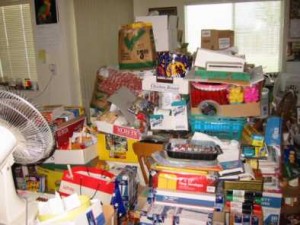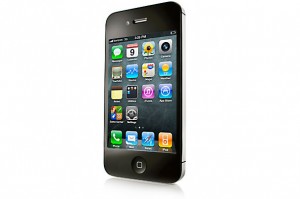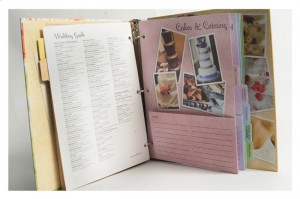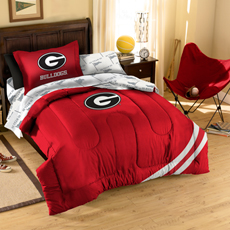Most people would love to be more organized, but have a tough time executing the steps needed to get there. Fortunately, there are quick fixes that overtime can lead to a more organized life. Check out our ideas below and add your own via comments.
- Put away the stacks of folded laundry currently living on a chair/floor/dresser to
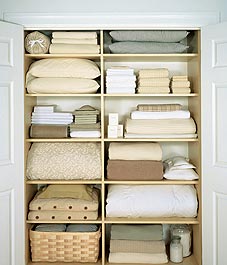 p, etc.
p, etc. - Remove wire dry cleaning hangers and put them in your car to return with the next dry cleaning drop off
- Throw out expired food
- Review a stack of mail and trash, shred, or file the contents
- Gather excess travel size personal care products and put them in a bag for donation
- Toss single socks whose mates have long been lost
- Delete 25 emails from your inbox
- Pick one surface to clean, remove all unnecessary items, and return them to their homes
- Clean out your purse or wallet
- Make a To-Do list
- Recycle magazines that are 4 months old or older. If you would like to keep it for specific info, tear out the article and place it in a dedicated magazine binder with plastic sleeves
- While at the gas pump, do a sweep of the car and throw out any trash
- Add yourself to a ‘do not mail’ list, such as 41Pounds.org
- Create 3 file folders on your computer and add appropriate documents from your desktop
- Review your kitchen gadget drawer and pick out any duplicates. Place dupes in a bag in your car for donation
- Look through your coupon file and recycle anything that’s expired
- Select 1-3 pairs of shoes that haven’t been worn in the past year and ready them for donation
- Pick 3 file folders that you haven’t touched in a couple of years and review the contents. Try to throw out as much as possible
- Throw out expired medications
- Add 10 minute blocks to your calendar for future organizing sessions
Good luck!
TWOW

 Google Plus
Google Plus